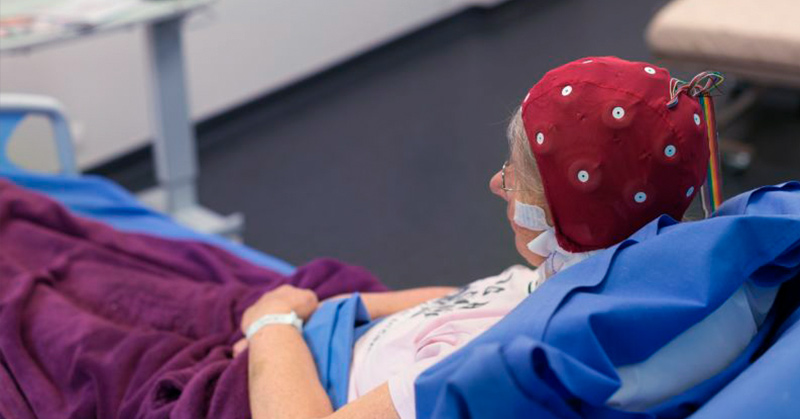Alzheimer’s is the most common cause of dementia, it’s a ruthless and unforgiving disease that slowly strips the sufferer of their individuality and personal memories. At some point in our lives, it is likely that we will witness a close family member or friend suffer with dementia, and there is no known way to reverse the process.
With that being said, a recent study published in Nature Neuroscience, has found a potential way to help restore memory. Researchers found that gentle and non-invasive stimulation, through electrical jolts of alternating currents, has displayed potential to restore working memories for older adults (aged 60 to 76 years old). In less than an hour, these participants reached the memory performance levels seen in younger adults (aged 20 to 29) [1].
It appears as if these electrical jolts have the ability to support the prefrontal and temporal cortex and re-sync the brain waves which are required for memory and high-order thinking. This finding may evolve into a new form of therapy for those with memory issues, this is especially meaningful for those living with the early stages of Alzheimer’s.
Robert Reinhart, and John Nguyen are both Boston University Researchers, and authors of this study. They’ve concluded that “by customizing electrical stimulation to individual network dynamics, it may be possible to influence putative signatures of intra- and inter-regional functional connectivity, and rapidly boost working-memory function in older adults.”
Reinhart and Nguyen had explored the minds of 42 older adults in their trial, aged 60–76 years. They had these participants take part in an exercise to ‘spot the differences’. In order to test their short-term recall memory, they displayed a high-quality picture in-front of them for a fraction of a second, they then received a blank flash, and then a flash of another image. This final image was either slightly altered or completely identical to the first image.
Before receiving the stimulation treatment, the participants had an 80-percent accuracy rate. After just 10-minutes of individualized stimulation treatment, the groups’ accuracy rate on the test had reached 90-percent, and their improvement lasted for the entirety of the 50-minute test.
In order to compare results, a separate group of younger adults (aged 20 to 29), took part in the same ‘spot the differences’ test. They finished with an accuracy rate of 90-percent, which is exactly what the older adults reached after undergoing the treatment.
These zaps and syncs for the brain waves could potentially be used as therapy in the future, however, while these findings are encouraging, it remains unclear if these small gains in a simple memory game would translate into measurable clinical benefits for those suffering from memory issues.
While a positive therapeutic response has been discovered more research and clinical trials will need to be performed.
Sources
- Electrical jolts to brain restored memory of elderly to that of 20-year-old
https://www.nature.com/articles/s41593-019-0371-x - Zapping elderly brains with electricity improves short-term memory—for almost an hour https://www.sciencemag.org/news/2019/04/zapping-elderly-brains-electricity-improves-short-term-memory-almost-hour
- Safety and efficacy of ECT in depressed patients with dementia: A review of clinical experience. https://psycnet.apa.org/record/1990-26093-001
- 10 Early Signs and Symptoms of Alzheimer’s https://www.alz.org/alzheimers-dementia/10_signs

